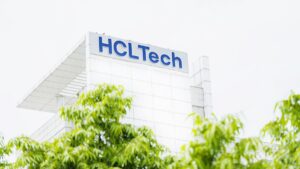Meta Elevates Competition in Open Model Development with Llama 4

Meta’s Expansion in Generative AI with Llama 4
Meta, the parent company of platforms like Facebook and Instagram, is making significant strides in the generative AI market with its latest offerings from the Llama 4 family. These new models aim to attract enterprise customers by providing powerful tools that are both free and affordable.
Introduction to Llama 4 Models
The new Llama 4 models include:
- Llama 4 Maverick: Contains 400 billion parameters
- Llama 4 Scout: Features 109 billion parameters
- Llama 4 Behemoth: Currently in preview, this model boasts an impressive 2 trillion parameters
According to Meta, the smaller models, Maverick and Scout, can operate on a single GPU, simplifying access for smaller enterprises.
The DeepSeek Factor
The release of Llama 4 is partly a response to competition from DeepSeek, a new player from China offering cost-effective and efficient generative AI models. Meta aims to match or exceed DeepSeek’s capabilities and pricing.
All three Llama 4 models utilize a mixture-of-experts architecture, similar to what DeepSeek employs. This approach allows different parts of the model to specialize in various tasks, enhancing performance. As noted by Andy Thurai, founder of advisory firm The Field CTO, Meta’s pricing strategy is designed to contend directly with DeepSeek’s offerings.
Andy Thurai: “DeepSeek basically came up with a model that’s cheaper, faster, more efficient and available for free. Meta actually wanted to beat that.”
The Llama 4 models are not entirely open source, described as “open weight”; this means that while the trained model parameters (also known as weights) are released, the underlying code and training data remain proprietary. This strategy positions Meta to offer both free and enhanced paid versions of the models.
Benefits for Enterprises
Previously, smaller and medium-sized enterprises have engaged with Meta’s earlier models for specific applications in marketing and e-commerce across its social platforms. This approach allowed Meta to broaden its user base without focusing solely on direct sales.
With the new Llama 4 models, Meta is targeting larger organizations that require more sophisticated applications of generative AI. As Arun Chandrasekaran, a Gartner analyst, pointed out, these models can be utilized in various sectors. For instance, they can assist in manufacturing settings for tasks like predictive maintenance and quality detection.
Although DeepSeek presents a competitive challenge, some analysts believe Meta holds a significant advantage in the generative AI space. Chandrasekaran emphasizes that Meta has established itself as a formidable player with a lasting presence in the industry.
The Open Model Market Landscape
Nevertheless, Meta is contending with stiff competition not just from DeepSeek, but also from other major players like IBM and AWS. The open-source landscape features organizations such as the Allen Institute for AI and Mistral, that are also making advancements in this field.
Meta has effectively captured a portion of the open-source market, allowing many enterprises to become familiar with the Llama models. The comfort level with these models helps Meta retain its position as a leader in the open weight generative AI arena.
As for performance, it is noted that the generative AI sector is in a phase of rapid evolution, where various vendors continuously surpass one another in tests benchmarking model size, speed, and efficacy.
- Pricing advantages: Llama 4 Maverick is priced between $0.19 and $0.49 per million input and output tokens.
- Competitive landscape: In contrast, competing models such as Google Gemini 2.0 Flash and OpenAI’s GPT-4o range from $0.17 to $4.38.
Meta’s commitment to developing sophisticated generative AI tools paired with accessible pricing is set to enhance its appeal to a diverse range of enterprises looking to innovate and grow.





